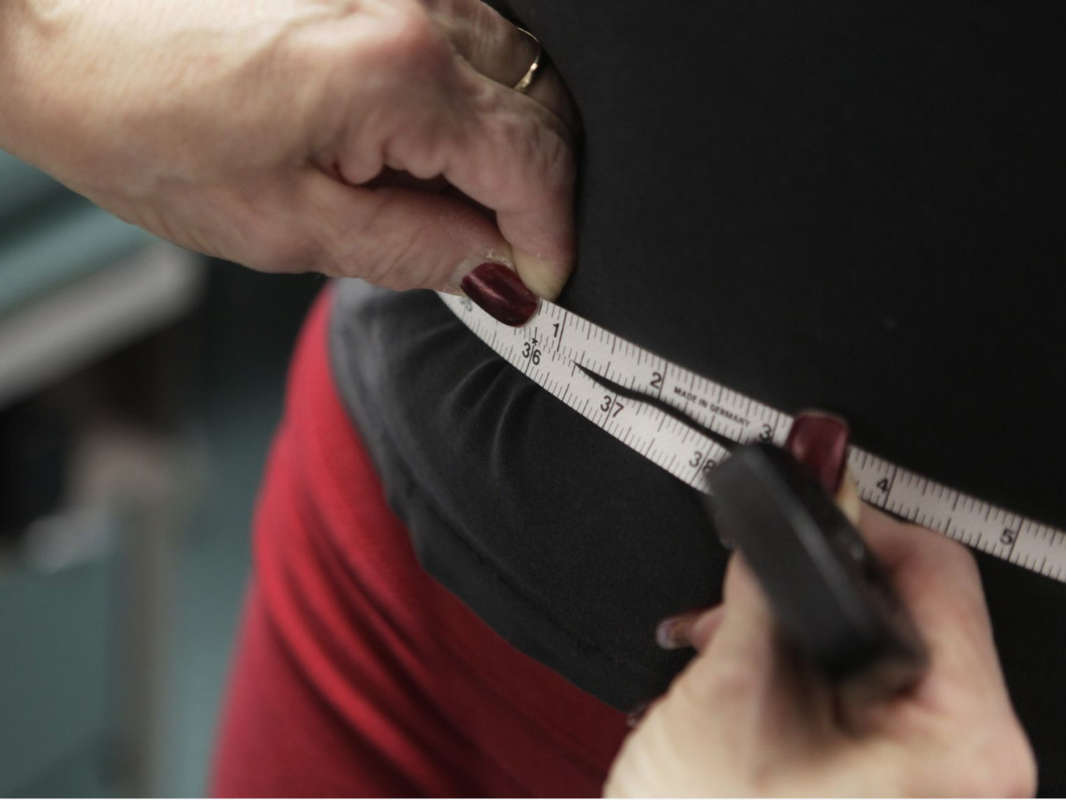
People should ensure their waist measurement is less than half their height to reduce the risk of potential health problems, an NHS watchdog has warned.
In updated guidelines, the National Institute for Health and Care Excellence (NICE) has said adults with a body mass index (BMI) under 35 should measure their own waist-to-height ratio as part of wider plans to tackle obesity.
This would mean, for example, a 5ft 4in woman with a waist circumference of 29 inches would have a healthy ratio, but a 32in waist would put them into the unhealthy range.
Meanwhile, a man who is 5ft 10in would be at increased health risks with a 36in waist.
The new guidelines say a healthy waist ratio of 0.4 to 0.49 indicates no increased health risks.
A ratio of 0.5 to 0.59 put people at an increased risk of health problems, while 0.6 or more puts them at the highest risk of issues.
The public can use an online calculator, or ask a health professional, to work out what a healthy ratio means for them.

NICE says that by using a waist-to-height ratio, together with BMI, people can work out whether they are carrying excess fat around their middle, which is known to push up the risk of type 2 diabetes, high blood pressure, and heart disease.
The new guidance comes as a 2019 health survey in England estimated 28% of adults were obese while 36% were overweight.
The current cost of obesity in the UK is £6.1bn to the NHS and £27bn to wider society.
In line with international guidance, NICE also recommends using lower BMI thresholds for overweight and obesity for people from south Asian, Chinese, other Asian, Middle Eastern, black African, or African-Caribbean backgrounds.
It is because these groups are more prone to carrying weight around their middle and have higher health risks at lower BMIs.
Dr Paul Chrisp of NICE said:
"Our updated draft guideline offers people a simple and effective way of measuring their weight so they can understand the factors that could impact on their health and take action to address them.
"Our committee found that a clear benefit of using the waist-to-height ratio is that people can easily measure it themselves, interpret the results, and seek medical advice if they are at increased health risk."
Guideline committee member Professor Rachel Batterham, consultant in obesity, diabetes, and endocrinology, said: "Increased fat in the abdomen increases a person's risk of developing several life-limiting diseases including type 2 diabetes and heart disease.
"Waist-to-height ratio is a simple, easy-to-use measure that identifies people who are at increased health risk and would benefit from weight management support to improve their health."
The draft guidance is subject to consultation.

 Five Amazing Chocolate Varieties Worldwide You Must Try
Five Amazing Chocolate Varieties Worldwide You Must Try
 Five Of The Most Wondrous Ancient Ruins In The World
Five Of The Most Wondrous Ancient Ruins In The World
 Five Of The Most Inhospitable Places on the Planet
Five Of The Most Inhospitable Places on the Planet
 Five Animals You Wouldn’t Believe Are Kept as Pets
Five Animals You Wouldn’t Believe Are Kept as Pets
 Five Most Pet-Friendly Destinations in the UK
Five Most Pet-Friendly Destinations in the UK



 Police Teams Head To Ryde Hostel As Ongoing Investigations Gather Momentum
Police Teams Head To Ryde Hostel As Ongoing Investigations Gather Momentum
 New High Street Health And Wellbeing Centre To Open In Newport
New High Street Health And Wellbeing Centre To Open In Newport
 Cowes Library Set To Undergo Building Works To Improve Accessibility
Cowes Library Set To Undergo Building Works To Improve Accessibility
 Isle Of Wight Park Could Be Upgraded As Part Of Council Works Scheme
Isle Of Wight Park Could Be Upgraded As Part Of Council Works Scheme